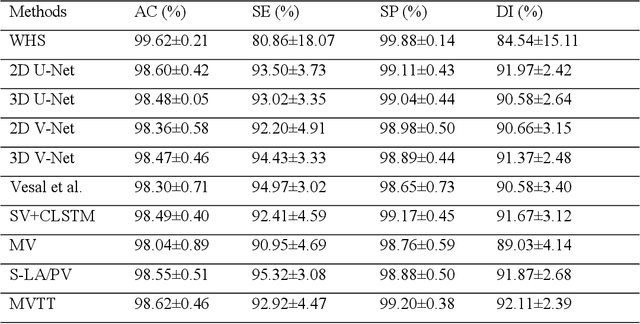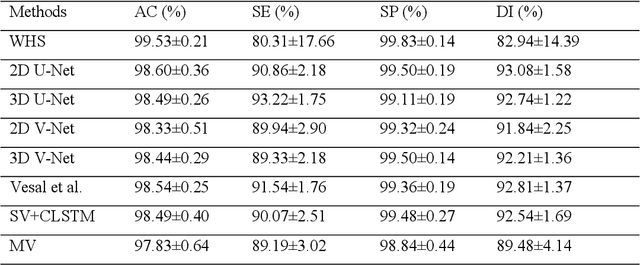Eva Nyktari
Simultaneous Left Atrium Anatomy and Scar Segmentations via Deep Learning in Multiview Information with Attention
Feb 02, 2020



Abstract:Three-dimensional late gadolinium enhanced (LGE) cardiac MR (CMR) of left atrial scar in patients with atrial fibrillation (AF) has recently emerged as a promising technique to stratify patients, to guide ablation therapy and to predict treatment success. This requires a segmentation of the high intensity scar tissue and also a segmentation of the left atrium (LA) anatomy, the latter usually being derived from a separate bright-blood acquisition. Performing both segmentations automatically from a single 3D LGE CMR acquisition would eliminate the need for an additional acquisition and avoid subsequent registration issues. In this paper, we propose a joint segmentation method based on multiview two-task (MVTT) recursive attention model working directly on 3D LGE CMR images to segment the LA (and proximal pulmonary veins) and to delineate the scar on the same dataset. Using our MVTT recursive attention model, both the LA anatomy and scar can be segmented accurately (mean Dice score of 93% for the LA anatomy and 87% for the scar segmentations) and efficiently (~0.27 seconds to simultaneously segment the LA anatomy and scars directly from the 3D LGE CMR dataset with 60-68 2D slices). Compared to conventional unsupervised learning and other state-of-the-art deep learning based methods, the proposed MVTT model achieved excellent results, leading to an automatic generation of a patient-specific anatomical model combined with scar segmentation for patients in AF.
Fully Automatic Segmentation and Objective Assessment of Atrial Scars for Longstanding Persistent Atrial Fibrillation Patients Using Late Gadolinium-Enhanced MRI
May 26, 2017



Abstract:Purpose: Atrial fibrillation (AF) is the most common cardiac arrhythmia and is correlated with increased morbidity and mortality. It is associated with atrial fibrosis, which may be assessed non-invasively using late gadolinium-enhanced (LGE) magnetic resonance imaging (MRI) where scar tissue is visualised as a region of signal enhancement. In this study, we proposed a novel fully automatic pipeline to achieve an accurate and objective atrial scarring segmentation and assessment of LGE MRI scans for the AF patients. Methods: Our fully automatic pipeline uniquely combined: (1) a multi-atlas based whole heart segmentation (MA-WHS) to determine the cardiac anatomy from an MRI Roadmap acquisition which is then mapped to LGE MRI, and (2) a super-pixel and supervised learning based approach to delineate the distribution and extent of atrial scarring in LGE MRI. Results: Both our MA-WHS and atrial scarring segmentation showed accurate delineations of cardiac anatomy (mean Dice = 89%) and atrial scarring (mean Dice =79%) respectively compared to the established ground truth from manual segmentation. Compared with previously studied methods with manual interventions, our innovative pipeline demonstrated comparable results, but was computed fully automatically. Conclusion: The proposed segmentation methods allow LGE MRI to be used as an objective assessment tool for localisation, visualisation and quantification of atrial scarring.
 Add to Chrome
Add to Chrome Add to Firefox
Add to Firefox Add to Edge
Add to Edge